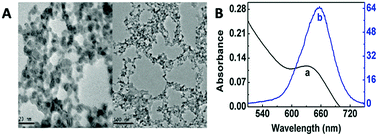Quantum material accompanied nonenzymatic cascade amplification for ultrasensitive photoelectrochemical DNA sensing
Abstract
A novel cascade photoelectrochemical (PEC) signal amplification sensing strategy was designed and applied in target DNA detection by introducing quantum dots (QD) as the accompanying tag. The CdTe QD was labeled onto a designed sequence of single stranded DNA forming S-QD, which could be further hybridized with another magnetic bead labeled conjugate, leading to a metastable structure. In the presence of the detecting target, the S-QD could be released from the metastable structure via toehold strand displacement. With the help of the designed strand (H), the target could be released and triggered the cascade amplification. In the magnetic field, the S-QD could be easily separated from the reaction mixture and coated on the F-doped tin oxide (FTO) electrode leading to the “signal on” PEC response. The designed cascade amplification photoelectrochemical strategy exhibited a detection limit of 0.76 pM target DNA, and a linear range from 1 pM to 50 nM, indicating promising application in DNA or related analysis. Moreover, compared with other tags such as fluorescent dye, the quantum material leads to less unspecific adsorption and better sensing reproducibility, due to the appropriate nano size and high quantum efficiency.



 Please wait while we load your content...
Please wait while we load your content...